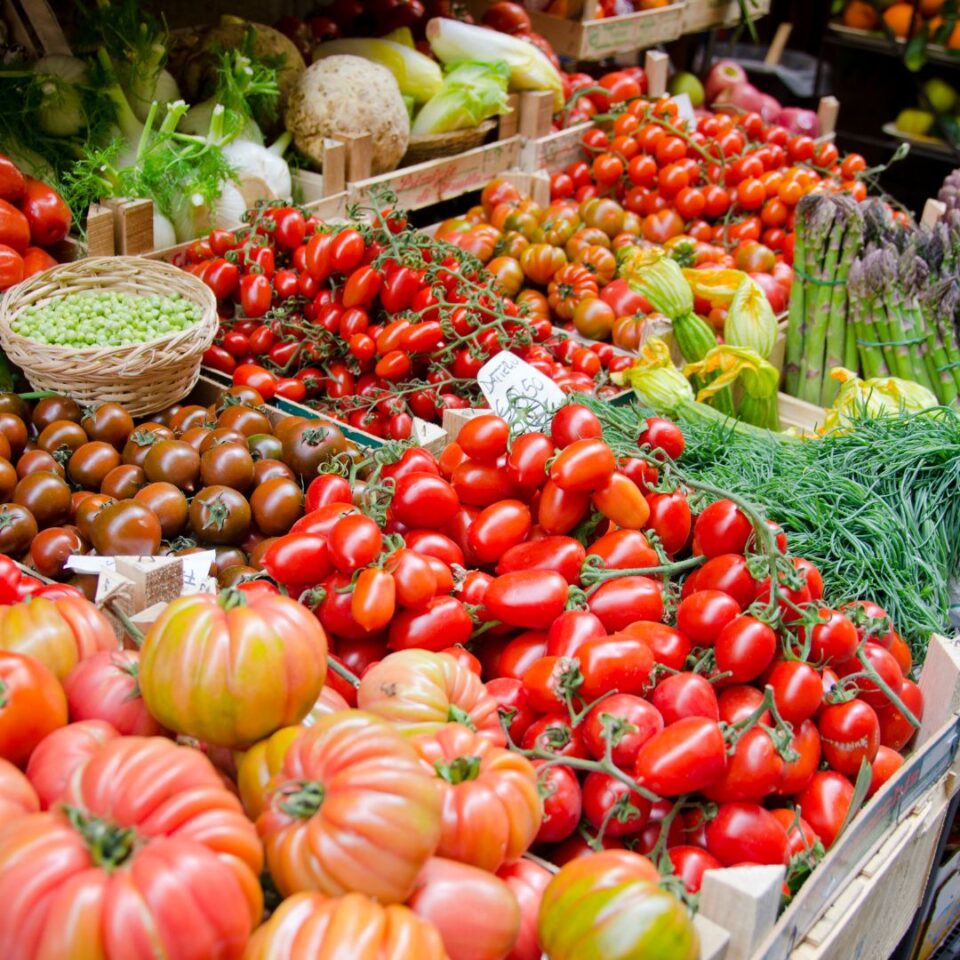While living in Italy is certainly a dream come true for most of us, it’s important to understand that it can also be a little… different. Turns out, living in a place is not the same as vacationing there. The goal of our Living in Italy series is to point out a few of the finer details of living abroad in Italy so that when you arrive for your citizenship journey, you’ll have some basic answers at your fingertips.
Now this may come as a surprise, but there can be some big differences when grocery shopping in Italy compared to the United States. When on vacation, I had stopped in the city center market to purchase a few items, but weekly (more likely, daily) grocery shopping in Italy has several basic differences influenced by Italian cultural, lifestyle, and economic factors.
Where you live helps determine the type of shopping you’ll do. Those who live in a major city may use the small city grocer (supermercato) or a major chain (ipermercato). In rural areas, most of the shopping may be done at the farmer’s market (mercato all’aperto).
While the markets above often have a variety of foods in one place, much of Italy still shops at highly individualized stores. For example:
- Macelleria for meats
- Polleria for poultry
- Pescheria for fish
- Panificio for bread
- Caseificio for cheese and dairy
- Pasticceria for pastries
- Bollicine for home goods
Differences between Italian and American grocery stores
With that in mind, here are some key differences between typical Italian and American grocery stores:
Store Size and Layout
In the US, supermarkets are often large with wide aisles and a vast selection of products. In contrast, Italian grocery stores, especially in smaller towns, may be smaller and more compact. Although there are still choices of products, you will rarely find an entire aisle dedicated to breakfast cereals. Pastas? Different story.
Shopping Frequency
Italians tend to shop for groceries more frequently, often on a daily basis or every few days. This is because many Italians prefer fresh, locally sourced ingredients and meals. Also, most foods have less preservatives, shortening their shelf life.
Local and Seasonal Emphasis
Italian grocery shopping is strongly influenced by the seasons. Italians take advantage of fresh, local produce and often buy what is in season. This is more pronounced than in the US, where a wider variety of produce is available year-round due to imports. Many foods can only be found when in season, which makes for a great opportunity to lean into local food culture at different times throughout the year.
Cultural Emphasis on Fresh and Quality Ingredients
Italians generally prioritize the quality of ingredients over convenience. Italian cuisine often involves preparing meals from scratch, and there is a strong cultural emphasis on fresh produce, meats, and artisanal products. In the US, there is a greater reliance on pre-packaged and processed foods, and meals may be more geared towards convenience.
Bread and Bakery
In Italy, bread is a staple, and many people buy fresh bread daily. There are also numerous local bakeries (panifici) offering a variety of bread and pastries. In the US, pre-packaged bread is more common, and specialty bakeries may be less prevalent depending on where you live.
Do-it-Yourself Shopping
When it comes to in-store shopping, it may be a change for you to fill your own juice or wine bottles in the store. For produce, you’ll be expected to use a provided plastic glove, pick and bag your produce, and then weigh it and tag it with the correct price at a machine. Forget to tag your produce? Sorry – you’re out of luck. Some grocery stores even have an attendant who will gather your produce for you.
Shopping Carts and Bags
In Italy, it’s common for shoppers to use smaller carts or baskets and to bring their own reusable bags. In the US, larger shopping carts and plastic bags are more common. Keep in mind, you will also be expected to bag your own groceries. The larger shopping carts almost always require a one euro coin to release it (you get it back when you return the cart). If you make friends with the staff, you might score yourself a plastic coin that unlocks them…
Shopping Hours
Shopping hours in Italy may be more limited compared to the US, and many stores may close for a few hours in the afternoon. Additionally, in smaller towns, some shops may close on Sundays. Also keep in mind that the listed closing time means that’s when they leave. Many stores stop allowing people into the store 30 minutes before closing.
Payment Methods
Credit card usage may be less common in smaller shops in Italy, where cash is still widely used. In the US, credit and debit cards are widely accepted.
While these generalizations hold true to some extent, it’s important to note that variations exist within both countries, and grocery shopping habits can vary depending on factors such as location, urbanization, and personal preferences. One thing is often true, however – the cost of most foods at the Italian grocery stores where I shop are significantly lower than in the US. Not only has my bill been cut in half, we’re eating healthier, fresher meals every day. It’s worth the extra trips to the store.



